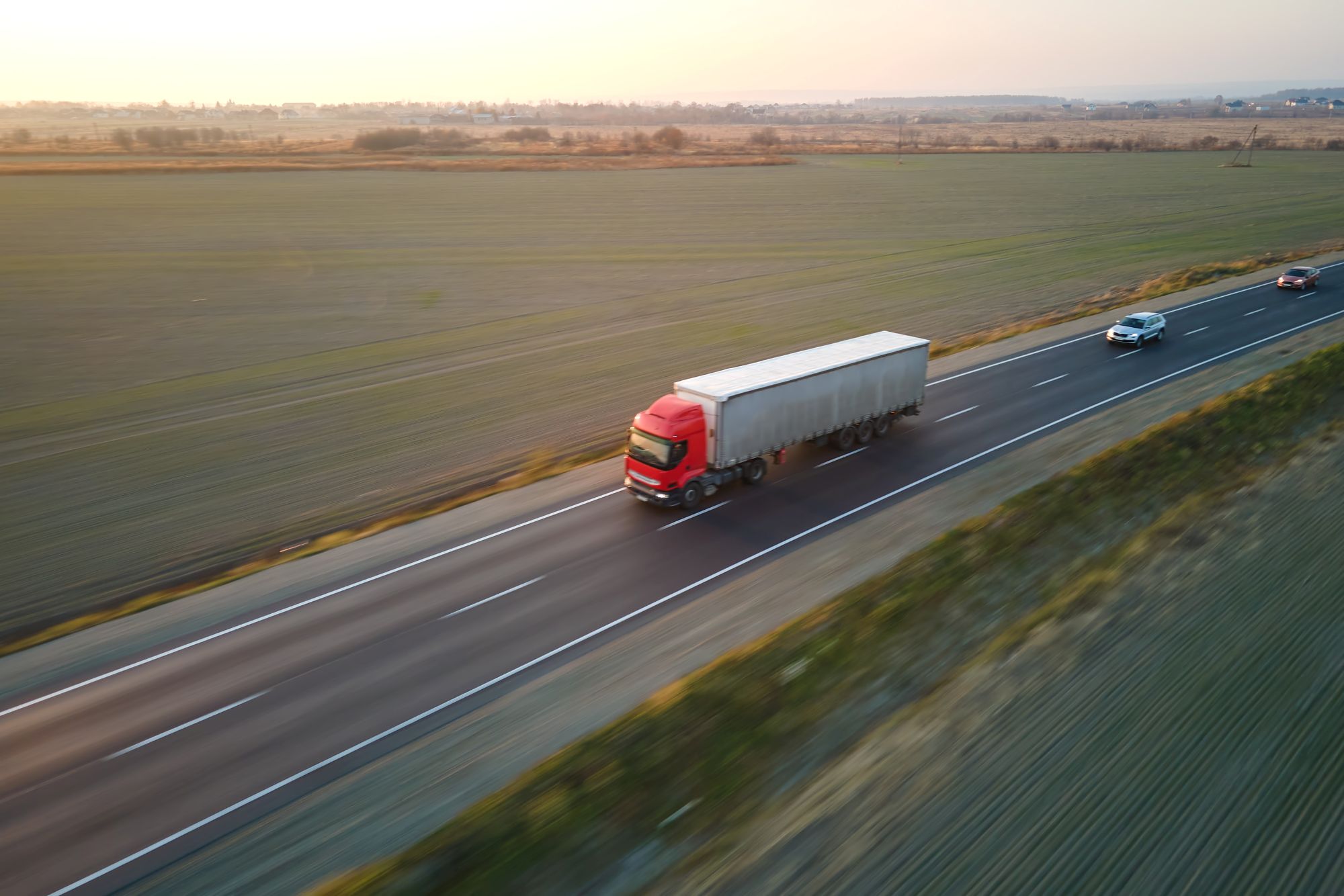
Miranda Blake
Día del Conductor de Camiones 2025: Dar voz a los camioneros
Creado: 22/01/2025
•
Actualizado: 22/01/2025
El 22 de enero de 2025 se celebra el Día del Conductor de Vehículos Pesados. Establecido por NN1 Personnel (reclutadores y proveedores de camioneros en la industria logística), el día pretende celebrar a los conductores y todo lo que hacen por la economía y la sociedad.
Sin los camioneros, que a menudo experimentan diversas dificultades en su trabajo (como estar lejos de sus familias y hogares, largas jornadas laborales y viajar en condiciones meteorológicas extremas), nos quedaríamos sin los productos y las comodidades que necesitamos. Han sido auténticos héroes en los últimos años y también antes: la pandemia fue sólo un ejemplo de ello.
La forma de celebrar el día depende de usted. El personal de NN1 recomienda realizar actos de amabilidad, por ejemplo ofrecer a los conductores una bebida caliente o charlar con ellos.
En SNAP siempre queremos dar voz a los camioneros. Y eso es exactamente lo que vamos a hacer en el Día del Conductor de Camiones. A raíz de una publicación reciente en nuestra página de Facebook en la que se preguntaba sobre la escasez de conductores y cómo garantizar que los jóvenes tengan el entusiasmo necesario para unirse al sector, destacamos algunos comentarios de camioneros que muestran sus experiencias reales, desde los retos a los que se enfrentan hasta lo que les gusta de su trabajo.
Equilibrio vida-trabajo
Uno de los principales temas de conversación de los conductores es el impacto de su trabajo en su vida personal: no estar presentes en los momentos importantes de la vida, tener que dormir en el taxi o que el dinero no compense los sacrificios que hacen.
*"La conducción de camiones siempre ha estado mal pagada, con muchas horas de trabajo y poca o ninguna vida social. Los jóvenes de hoy en día no soportan los horarios absurdos, ya que la mayoría tiene una vida fuera del trabajo".
*"No lo recomendaría a menos que lo lleves en la sangre. No es como un trabajo normal; es una forma de vida. Tienes que entender en qué te estás metiendo. No hay horarios fijos como en una fábrica. Todo depende de la naturaleza del trabajo. Se espera que hagas turnos de 15 horas y que pases las noches en la cabina si el trabajo lo requiere, y que te jodan la vida en casa".
*70 horas a la semana de media por 50.000 libras al año ya no merece la pena. El salario mínimo está alcanzando rápidamente el salario medio de un camionero, así que haré horas extra en una fábrica por un sueldo similar y podré ver a mi mujer todas las noches".
*"Tener que hacer 60/65 horas a la semana, 3/4 noches fuera, sin vida social - por el dinero que ganas podrías también apilar estanterías en Aldi y tener una vida. Los nuevos conductores no quieren trabajar tantas horas ni salir tantas noches por la miseria que ganan. Por eso, cuando las empresas empiecen a pagar más a los conductores, empezarán a contratarlos".
*"¿Cuántos de los que empezaron al mismo tiempo que yo continuaron en la industria? ¿Cuántas esposas se hartaron de no ver a sus maridos? ¿Cuántos conductores se hartaron de no ver a sus mujeres e hijos?
*"¿Por qué iban a entrar en el sector los conductores jóvenes? Largas horas, mal pagados. Pueden ganar más dinero y tener una vida más sociable si se forman en otra cosa. Lamentablemente, ya es demasiado tarde para mí".
Las estadísticas respaldan esta afirmación. Por ejemplo, se ha descubierto que los camioneros trabajan una media de 48 horas semanales - en comparación con las 37,5 horas de todos los empleados, lo que supone un considerable 28% más. Así pues, no es de extrañar que sólo un tercio de los conductores considere que su empresa apoya el equilibrio entre su vida profesional y personal (https://assets.publishing.service.gov.uk/media/651ed5155f7e680014fabe28/hgv-driver-recruitment-retention-rapid-evidence-assess-dft.pdf). Tampoco resulta chocante que un número tan significativo haya abandonado el sector, incluido el 67,21% de los menores de 30 años que colgaron el uniforme de alta visibilidad al año de la pandemia.
Life after trucking
Algunos de los que lo comentaron han abandonado el sector para dedicarse a otras tareas que les hacen más felices.
"Cobrar más en una fábrica mecanizando piezas... y saber cuándo me voy y cuándo me voy a casa, así que pan comido ".
Mi carné y mi CAP están en mi cartera. Enseña a la gente a conducir coches ahora ".
*"No te lo pierdas ni un poco. La licencia sigue siendo válida. Deja el CPC. Ya he tenido bastante".
*"He sido Clase 1 durante años, y no volvería a ella porque puedo ganar el mismo dinero y tener una vida familiar en una fábrica. Ya no merece la pena".
*He vuelto a conducir autobuses porque pagan más por hora donde vivo. Después de 15 años conduciendo camiones, me encantan los turnos de ocho horas. No te das cuenta de lo que te pierdes con el tiempo de calidad fuera del trabajo hasta que lo vuelves a experimentar".
Siguiendo los pasos de la familia
Otros, en cambio, reflexionaron sobre los buenos recuerdos que guardaban de pequeños cuando viajaban en camión con sus padres, así como sobre el valor de esta experiencia y cómo les llevó a incorporarse ellos mismos al sector tras finalizar sus estudios.
*"Creo que el sector no está pensando en cómo se ha educado a los jóvenes de 21 años. Antes, salían con sus padres en camiones. Los chicos del camión desarrollaban las mismas habilidades cerebrales, pero mirando los números de la carretera".
"Cuando dejaron de permitir a los niños ir en el vagón con sus padres en vacaciones, fue cuando los jóvenes dejaron de interesarse. Admitámoslo: no hay precisamente incentivos económicos para alistarse, ¿verdad? ".
"Nunca tuve unas vacaciones escolares sin ir con mi padre en el camión ".
"Conocían el trabajo a la perfección antes de salir de la escuela ".
*"Fue genial ir a Bélgica con mi padre. United Carriers para una agencia llamada Protem Ltd de Kent. Luego pasé a Marley Extrusions. Después, y todavía ahora, soy ayudante de conductor sin carné; ojalá lo tuviera, pero mi vista no es muy buena, así que hago lo que puedo como ayudante de conductor. Me encanta estar en mis camiones".
Pasión por el trabajo
En la misma línea, muchos se mostraron en desacuerdo con que el transporte por carretera no sea el trabajo ideal, ya sea por el dinero o simplemente por su afición a conducir un camión.
*"Hago tres noches a la semana por una base de 45.000 libras al año. Muéstrame otro trabajo que pueda conseguir con dos semanas de formación y que pague eso".
*Llevo casi 49 años en el sector de los petroleros y sigo trabajando los fines de semana a los 74, con una salida nocturna a la semana, y puedo asegurarte que hay escasez de hombres buenos en el sector. Muchos hombres buenos han muerto antes de tiempo. Si pudiera, volvería a hacerlo".
"Es una profesión que te gusta o no te gusta. A mí me gustó durante muchos años y estuve fuera entre cuatro y seis semanas seguidas. Depende mucho de la empresa a la que te afilies. Yo estuve 32 años en la mía ".
Pasé mi HGV a los 19 años. Llevo casi tres años viajando, me encanta ".
"El 50% de los conductores no quería estar fuera, y nadie quería estar fuera los fines de semana. Más o menos todo el mundo me decía: 'Te has perdido los mejores años, hijo, búscate otro trabajo'. La verdad es que el dinero no estaba mal si trabajabas las horas necesarias, y si estabas allí por el dinero podías ganarte bien la vida. Si querías una vida fácil en los mejores camiones, mucho descanso y que tu empresa te cuidara, te habías equivocado de trabajo ".
*Siempre he trabajado más de 60 horas a la semana y he tenido una vida cómoda y, sobre todo, una mujer muy buena, comprensiva y fuerte a mi lado. Y sí, lo volvería a hacer".
Reconocimiento a los camioneros en este Día del Conductor de Camiones
Todos estos comentarios dejan claro que, si bien es cierto que los camioneros se enfrentan a retos, también es cierto que hay muchas cosas que les gustan y que para algunos es una carrera que están encantados de hacer de por vida, por lo que tiene sentido que alrededor de la mitad de los conductores se sientan satisfechos con el trabajo.
Creemos que es crucial que todo el mundo reconozca todo lo que los camioneros hacen por nosotros. Lamentablemente, algunos conductores señalaron que experimentan una importante falta de respeto. Esto no debería ser así: hay que reconocerles lo que hacen para darnos todo lo que necesitamos en la vida. Como dijo un camionero:
*"Las autopistas pueden ser las venas del país, pero los camiones son nuestra sangre. Sin ellos, no tendríamos alimentos ni mucho menos mercancías".
Por eso, este Día del Conductor de Camiones -y todos los demás días- pedimos a todo el mundo que reconozca a quienes trabajan por nosotros en la carretera. Los camioneros merecen elogios, respeto y mucho más.



